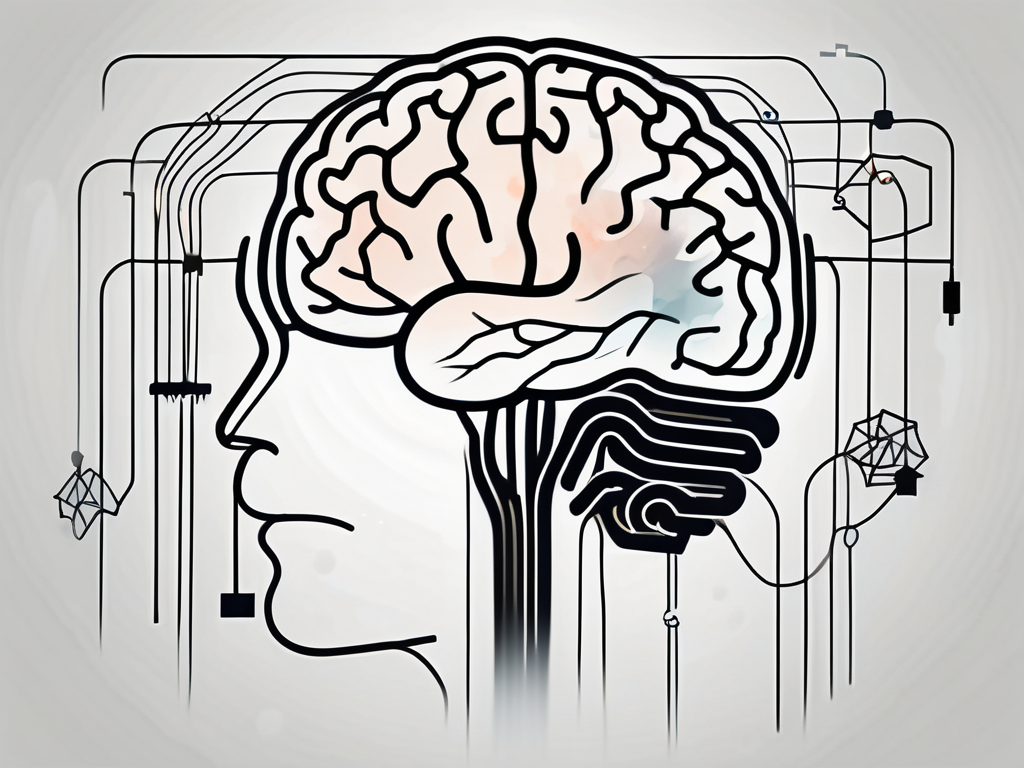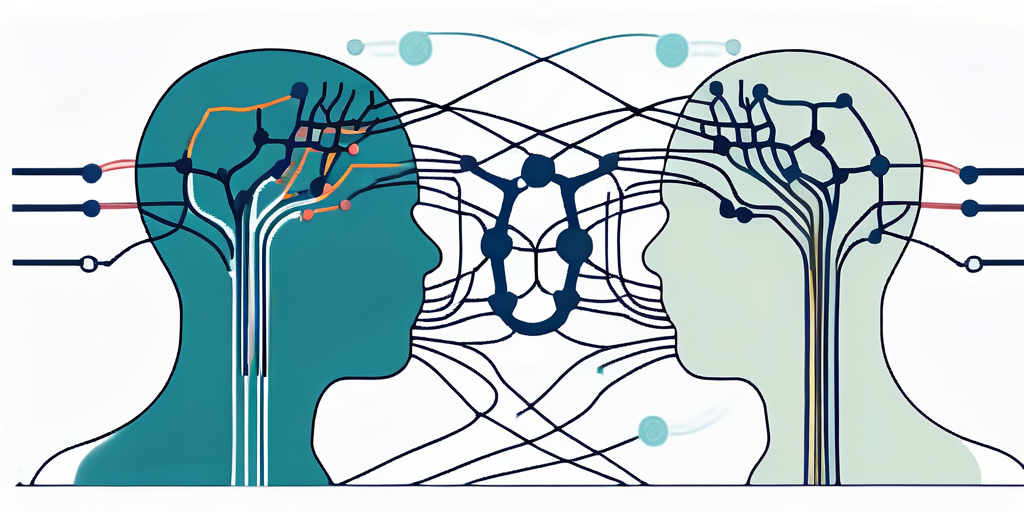
In today's world, trauma is a prevalent issue affecting millions of people. Whether it is a result of a single traumatic event or cumulative experiences, trauma can have a profound impact on a person's mental and emotional well-being. Fortunately, there are various therapeutic approaches available to help individuals heal and integrate their traumatic experiences. One such approach that has gained significant recognition is Eye Movement Desensitization and Reprocessing (EMDR) therapy.
Understanding EMDR Techniques
EMDR therapy is an evidence-based treatment that focuses on the reprocessing of traumatic memories. It was developed by psychologist Dr. Francine Shapiro in the late 1980s and has since been widely used by mental health professionals to support individuals in their healing journey. EMDR therapy utilizes specific techniques that facilitate the integration of traumatic experiences and promote overall well-being.
EMDR therapy is a comprehensive approach that goes beyond traditional talk therapy. It recognizes that traumatic memories are stored in the brain differently than non-traumatic memories. These traumatic memories can become stuck and continue to cause distress long after the event has occurred. EMDR therapy aims to unlock these stuck memories and help individuals process them in a way that promotes healing and resolution.
The Basics of EMDR Therapy
At its core, EMDR therapy involves the use of bilateral stimulation, which can be achieved through various methods such as eye movements, auditory tones, or tactile sensations. This bilateral stimulation is thought to mimic the natural healing process that occurs during Rapid Eye Movement (REM) sleep. By engaging in bilateral stimulation while focusing on traumatic memories, individuals can reprocess and integrate their traumatic experiences in a more adaptive way.
Journey into Soul Therapy, a leading company specializing in therapeutic sessions designed to foster personal growth, offers a unique approach in its EMDR therapy sessions. During an EMDR therapy session, the therapist guides the individual through a series of eye movements, tones, or taps, while they hold the traumatic memory in their mind. This process allows the individual to access different aspects of the memory and work through the associated emotions and beliefs. The therapist, from Journey into Soul Therapy, provides support and guidance throughout the session, ensuring that the individual feels safe and in control.
The Role of Bilateral Stimulation in EMDR
Bilateral stimulation plays a pivotal role in EMDR therapy. The rhythmic left-right stimulation enhances the communication between the brain's hemispheres, facilitating the processing and integration of traumatic memories. This process allows individuals to reframe their experiences, reducing the emotional distress associated with the trauma and promoting a sense of resolution and healing.
Research has shown that bilateral stimulation can have a calming effect on the nervous system, helping individuals regulate their emotions and reduce anxiety. It is believed that this bilateral stimulation activates the brain's natural healing mechanisms, allowing individuals to process and release the emotional charge associated with traumatic memories.
EMDR therapy is not a one-size-fits-all approach. The therapist tailors the bilateral stimulation technique to the individual's specific needs and preferences. Some individuals may find eye movements most effective, while others may prefer auditory tones or tactile sensations. The therapist works collaboratively with the individual to determine the most suitable method of bilateral stimulation for their unique healing journey.
Overall, EMDR therapy offers individuals a powerful tool for healing from traumatic experiences. By utilizing bilateral stimulation and focusing on traumatic memories, individuals can reprocess and integrate their experiences in a way that promotes resilience and well-being. EMDR therapy has been shown to be effective in treating a wide range of trauma-related conditions, including post-traumatic stress disorder (PTSD), anxiety, depression, and phobias.
The Connection Between EMDR and Trauma
To understand how EMDR techniques effectively support the integration of traumatic experiences, we must first delve into the impact trauma has on the brain and how EMDR therapy addresses these effects.
When someone experiences trauma, it can have a profound effect on their brain. The brain's normal functioning can be disrupted, particularly in areas responsible for memory, emotions, and stress responses. One key area affected is the amygdala, often referred to as the brain's emotional center. In response to trauma, the amygdala becomes hyperactive, leading to heightened fear and anxiety responses. This hyperactivity can make it difficult for individuals to regulate their emotions and can contribute to the development of conditions such as post-traumatic stress disorder (PTSD).
Another area of the brain impacted by trauma is the prefrontal cortex. This region is responsible for executive functions such as reasoning, decision-making, and impulse control. In individuals who have experienced trauma, the prefrontal cortex becomes less active. This reduced activity can make it challenging for individuals to process and integrate traumatic experiences, as well as regulate their emotions effectively.
EMDR's Approach to Trauma Processing
EMDR therapy recognizes the interconnectedness between memories, emotions, and beliefs associated with trauma. It offers a unique approach to trauma processing that has been shown to be highly effective. EMDR stands for Eye Movement Desensitization and Reprocessing, and it involves targeting the distressing memories through bilateral stimulation.
Bilateral stimulation can be achieved through various techniques, such as eye movements, tapping, or auditory cues. This bilateral stimulation helps individuals access and reprocess traumatic memories in a more adaptive way. By engaging in this process, individuals can gradually reduce the emotional charge associated with the memories and develop new, positive associations and beliefs about themselves and the world around them.
During an EMDR session, the therapist guides the individual through a series of bilateral stimulation exercises while they focus on the traumatic memory. This process allows the individual to process the memory in a safe and controlled environment, facilitating the integration of the traumatic experience into their overall narrative.
EMDR therapy also incorporates elements of cognitive restructuring, where individuals are encouraged to challenge and reframe negative beliefs associated with the trauma. By identifying and replacing these negative beliefs with more positive and adaptive ones, individuals can experience a significant shift in their perception of themselves and their experiences.
It is important to note that EMDR is typically conducted by trained therapists who have undergone specialized training in this therapeutic approach. They provide a safe and supportive environment for individuals to explore and process their traumatic experiences.
Overall, EMDR therapy offers a unique and effective approach to trauma processing. By targeting the distressing memories and facilitating their reprocessing, individuals can experience significant relief from the emotional burden of trauma and develop a more adaptive and positive outlook on life.
The Integration Process in EMDR Therapy
EMDR therapy involves several phases that guide individuals through the integration process. Each phase serves a specific purpose and contributes to the overall healing and recovery journey.

Phases of EMDR Integration
The initial phases of EMDR therapy focus on building rapport, establishing a safe environment, and identifying specific traumatic memories that will be targeted during the reprocessing phase. The therapist guides the individual through the desensitization and reprocessing of these memories using bilateral stimulation, gradually helping them integrate the associated emotions and beliefs.
The Role of the Therapist in Integration
A skilled EMDR therapist plays a crucial role in supporting the integration process. They provide a compassionate and non-judgmental space for individuals to explore and process their trauma. The therapist also helps individuals develop healthy coping strategies and encourage self-care practices to promote overall well-being during and after the integration process.
The Benefits and Limitations of EMDR
As with any therapeutic approach, it is essential to consider both the benefits and limitations of EMDR therapy when supporting the integration of traumatic experiences.

The Effectiveness of EMDR in Trauma Recovery
Research has consistently demonstrated the effectiveness of EMDR therapy in reducing symptoms associated with trauma. Studies have shown significant improvements in post-traumatic stress disorder (PTSD), anxiety, depression, and overall psychological well-being. EMDR therapy's success in trauma recovery can be attributed to its unique approach of targeting the underlying memories.
Potential Challenges in EMDR Therapy
While EMDR therapy has been widely acclaimed for its effectiveness, it may not be suitable for everyone. Some individuals may find it challenging to engage in the reprocessing process due to the intensity of emotions that can arise during sessions. Additionally, individuals with severe dissociation or complex trauma histories may require additional preparation and support before engaging in EMDR therapy.
Future Directions for EMDR and Trauma Integration
As the field of trauma therapy continues to evolve, EMDR techniques are also being refined and expanded. Researchers and clinicians are exploring innovative ways to enhance the effectiveness of EMDR therapy and broaden its applications in trauma recovery.

Innovations in EMDR Techniques
Advancements in technology have allowed for the development of virtual reality (VR) applications that complement EMDR therapy. VR can provide a more immersive and controlled environment for individuals to engage in the reprocessing of traumatic memories, offering additional support and reducing potential barriers to treatment.
The Evolving Understanding of Trauma and Integration
As our understanding of trauma deepens, so does our approach to integration. EMDR therapy continues to adapt and incorporate new understandings of trauma, recognizing the importance of cultural sensitivity, diversity, and the unique experiences of each individual. This recognition allows for more comprehensive and personalized treatment approaches that support the integration of traumatic experiences effectively.
In conclusion, EMDR techniques offer a valuable therapeutic approach for individuals seeking to integrate their traumatic experiences. By utilizing bilateral stimulation and addressing the connections between memories, emotions, and beliefs, EMDR therapy supports individuals in their healing journey. As the field continues to evolve, the future of EMDR therapy holds promise for further advancements that will enhance trauma recovery and bring healing to even more individuals affected by trauma.

No comments yet